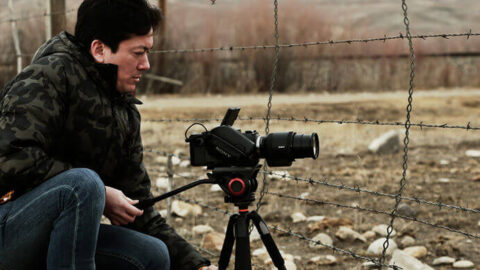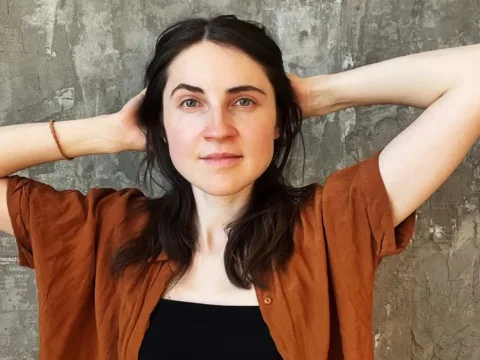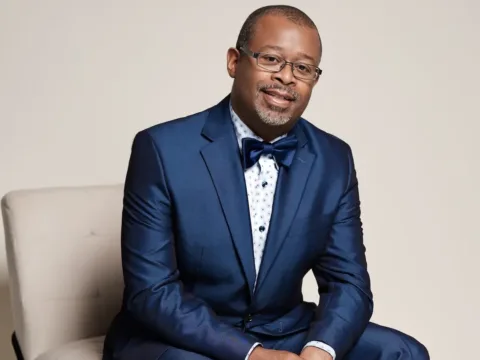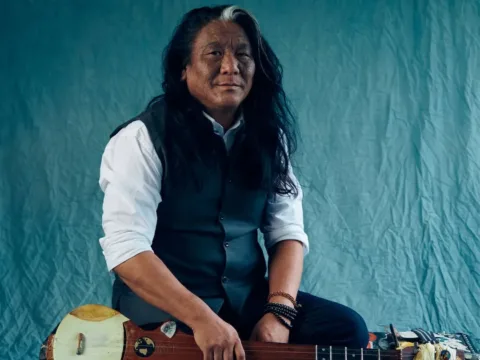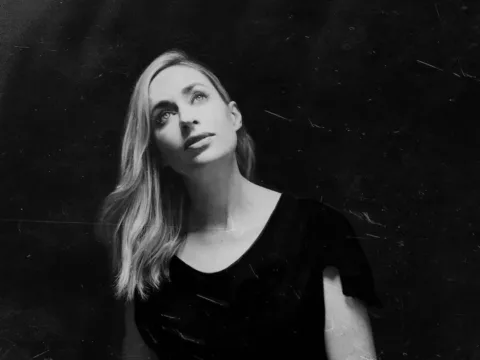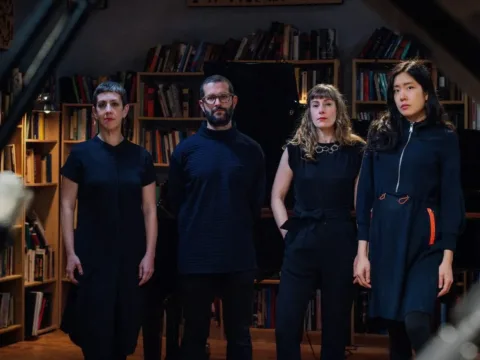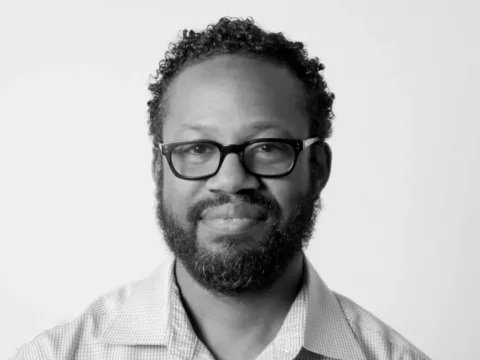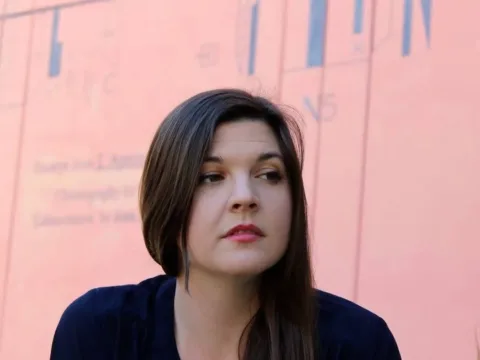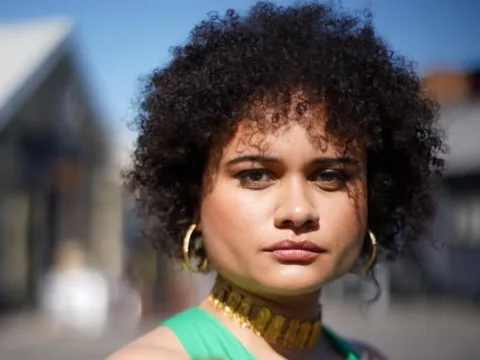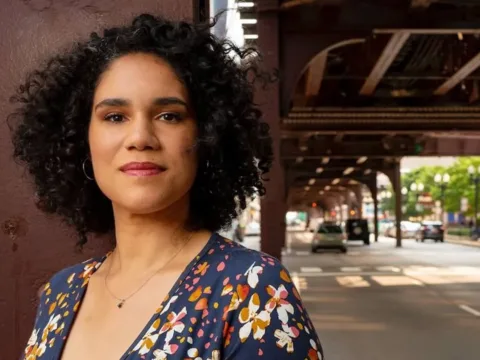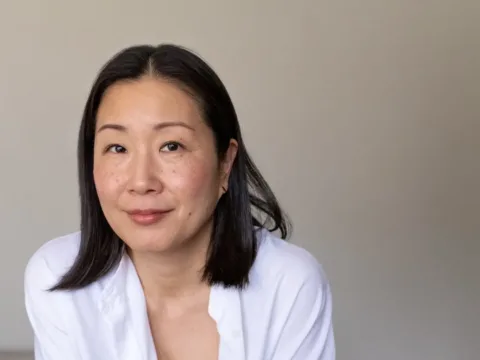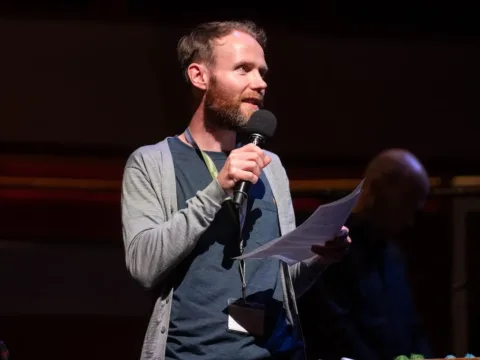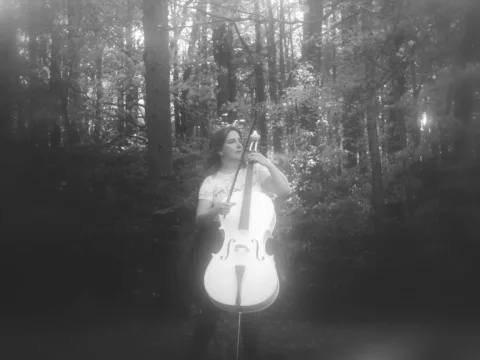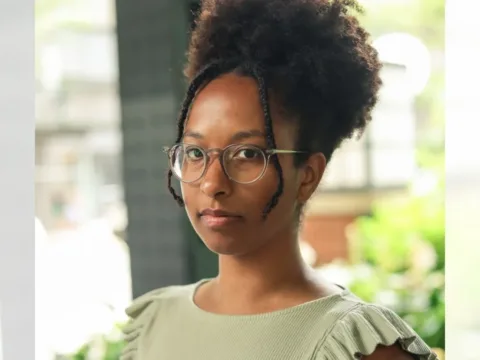You’ve just released Quartet for the End of Time, a 30-minute documentary on the eponymous, iconic Messiaen piece. A lot has already been said; what was your approach?
Documenting concerts at The Phillips Collection has given me access to some great performances in Washington, D.C. A little over a year ago, I noticed a serendipity: “The President’s Own” U.S. Marine Band Ensemble was to perform Olivier Messiaen’s transcendent masterpiece, leading into the 75th anniversary of that work’s January 15, 1941 debut under extraordinary circumstances. The story has often been told, about the composer’s imprisonment at Stalag VIII-A when serving in the French army during World War II, and how he composed Quatuor pour la fin du temps using instruments and musicians that he managed to assemble, debuting the work inside that camp to an audience of yearning prisoners at a time of chaos and desperation. But nobody had ever created a formal documentary about this, and I thought, how ironic to see it performed by members of the U.S. military who helped liberate Europe from the Nazis — in a time of seeming apocalypse, when the enemy was clearer to define. During production, the terror attacks in France happened, and I found that the ensemble’s violinist gave a timeless perspective on universal chaos, and transcendence, giving me ingredients to pull together something interesting. Taking cues from Messiaen’s passions, I found resonance in birds, sensory perceptions merging color and form in visual art, environmental landscapes from my world travels, and the “Apocalypse” series of woodcut prints by the great Reformation-era artist Albrecht Dürer. Not really entertainment (while “Mozart in the Jungle” recently delivered a pretentious dalliance with the music), my documentary walks through each movement, and although I had finished it in time for the precise 75th anniversary last year, another project brought me nearby to the actual prison camp ruins in August: so I was able to add footage from the actual location of Stalag VIII-A; and with that experience of exploring the ruins, I got to know an organization dedicated to the music’s story and place, called Meetingpoint Messiaen. They’ll give the world premiere screening on that same day of the composer’s original performance, at the place where it happened (at today’s border between Germany and Poland): a cultural meetingpoint that fulfills their name. The screening is followed by a performance of the complete work by Flex Ensemble as the culmination of an ambitious Messiaen festival there, but already, my 30-minute film is available freely worldwide, with English/French/German/Polish/Russian subtitles, at www.quatuor.xyz (and also, embedded right here for the first time anywhere else).
https://www.youtube.com/watch?v=uCIODSga9vQ
The passion and craft you put in your documentaries are remarkable. Sitka (2016), is no exception. Can you tell us more about it?
That same place where I’ve been documenting concerts reached a moment when they needed to replace the sound-board of their Steinway Concert “D” grand piano, which requires total disassembly. Caroline Mousset, producer of the film (and music director there), asked me to document the months of work done by a leading restorer in the area called PianoCraft, in itself a teachable occasion to learn how pianos work — and to celebrate this remarkable craftsmanship as timeless as the first Steinway ever created. In the film, we get to know two young guys patiently carrying on the old tradition, and it consummates with a rising star among concert pianists, Olivier Cavé, putting the resurrected Steinway “D” to the test: an occasion to ask whether it’s worth all the effort — and it is! Great instruments make for great performances.
How do you achieve this feature-film cinematography as a one-person team?
A technology that builds on the Steadicam tradition, that uses stabilizing motors on three axes, became practical and portable in the past couple of years. I started creating dance films using these gimbals in 2015, helping me be a single-camera operator and a choreographic partner to the movement. It was such a new thing around the time, that Paramount hired me as a “small-camera specialist” to shoot Tony Hawk on a skateboard for a comedy feature. Sitka was my first documentary experiment that way, keeping mobile almost the whole time, and Quartet for the End of Time consummated that style of floating around musicians, or across the ruins of the prison camp. Freed from a vest-worn Steadicam rig, you can really get into tight spaces without being disruptive, while also setting an extra unattended 4K camera onto sticks for shot diversity and re-composition/cropping in post. That shooting style climaxed when I shot Josephine Decker’s “First Day Out” in the anthology film collective:unconscious, drawing comparisons to Malick/Lubezki on a relatively fast-moving “guerilla indie” production with long single shots.
What advice could you offer to people interested in documenting the new music scene through filmmaking?
Always at risk of getting into a rut, I keep coming back to just a few ingredients that create meaningful contrasts: I roam around musicians at rehearsal with a gimbal-stabilized camera; sit down for short interviews that cut into the edit; shoot the resulting concert multi-cam with one attended that tracks and zooms, and two unattended that include one wide shot, and one tight onto fingerwork; then lastly, add spare out-of-context poetic imagery to complement what’s heard and said. Such low-budget/no-budget filmmaking has steadily disrupted the old-school video production industries that had usually scared off the arts — by analogy, at some point years ago, senior corporate executives stopped dictating letters to assistants, and just started typing their own e-mails: so these tools for shooting and editing rich media are like the baseline skill of typing on a keyboard. Now it’s mandatory to know how to use them, because it’s the main way we communicate stories about art, and create much art itself. After the learning curve, it really does get quicker, reduced to minor questions like whether you pick Final Cut or Premiere, but the fact is, there’s no opting out from learning video production anymore. I’ve created a community centered at www.focuspulling.com to grapple with that.
What’s next for you?
It’s been interesting to work with and to learn from living composers, studying contrasts in style, vision, and influence between them: it’s the food of music, becoming a whole feast beyond what just rattles air. That line of thought set me up to focus on one composer over a long period of time, who actually isn’t “contemporary” (if that means, currently alive): Samuel Barber (1910-1981). Even taking an historical view, his musical range today surprises: everyone knows the perfect, cathedral-like architecture of his Adagio for Strings, but then there’s his violent Medea, or the Fuga of his Piano Sonata, and he sounds utterly modern, distinct from the doctrinal canon of American composers like Copland and Bernstein. Going back to the Messiaen documentary, it fascinates me to compare him with his great student, Pierre Boulez, who epitomized the idea that modern art must invent new things: and while much of Messiaen’s Quatuor is lyrical and lovely, you can just as easily say it “out-modernizes” Pierre Boulez himself by transcending the safety of procedural systems, expanding its palette farther into synesthesia and ornithology for example (let alone mysticism). Barber got unhappy toward the end, falling out of fashion in that haze of modernism, but I figured it was time to line everything up, and reconcile his life’s work cinematically. In hindsight, I would have never started the film if I knew how hard it would be: educational documentaries about “classical” music are increasingly treated like commercial assets (no matter the financial reality), just as the overall genre of documentaries preoccupies more than ever with cause-driven projects — and thus the arts as a subject matter suffers, at a time when outreach using new media is more important than ever, to bring audiences back into the live music experience. I wish that our corporatized gatekeepers of licensing old content understood how vulnerable they are, but I’ve barely squeaked through those gates after seven years or so, and Samuel Barber: Absolute Beauty is making its way into the world (next, an East Coast premiere in Washington, D.C.). It may stand a chance to get seen in the worlds of education, and video-on-demand to niche audiences, so I’ve created an accessible home for it at www.samuelbarberfilm.com. Next, I’m taking a break from these music documentaries and shooting a dance film that will debut in a couple of months, when the Philharmonia Orchestra of New York plays Richard Wagner’s Prelude to Tristan und Isolde in sync to the film that’s projected onto a big screen in concert at City Center.
